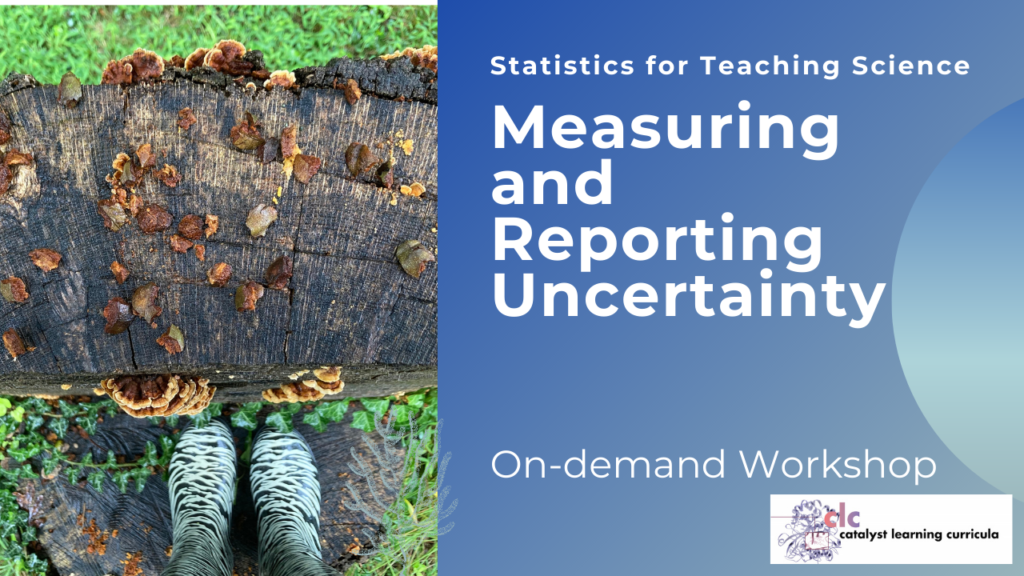

When teaching science, it is important to instill in students a culture of transparency. Whether we are collecting data from experiments or simply making observations, measurements are the basis of our analysis and conclusions. It may be tempting to simply record measurements and call it good, but only the researcher knows the strength of the data collected. And so, to be a scientist, we must report uncertainty in measurements.
Uncertainty is the quantitative estimation of error present in data; all measurements contain some uncertainty generated through systematic error and/or random error.
Journal of Professional Learning
Yep, all measurements contain a slight margin of error. These errors in the initial measurements will accumulate and be present in the compiled data. Because there will always be error, your students need to know how they should report uncertainty at each stage of data analysis.
The most common type of error your students will come across is observational error. This means that there will be slight variability in their measurements. By expressing uncertainty, students acknowledge the variations in their measurements.
But wait…there’s more than one way to report uncertainty!
Unfortunately, there is no general rule for determining the uncertainty in all measurements. The experimenter is the one who can best evaluate and quantify the uncertainty of a measurement based on all the possible factors that affect the result.
Journal of Professional Learning
Depending on the type of measurements my students are taking, I sometimes give them up to seven different ways to report uncertainty. But in each case, it is essential they justify the choice they make–it must be a defensible analysis. Today, I’m going to share three of those ways with you. I share my full list of methods, (plus an activity model and data collection sheet), in Part 1 of my workshop series, Statistics for Teaching Science.

No matter which method you use, first have your students take a series of measurements and calculate the mean. Then you can show them how to present their answer as the mean plus or minus (+/-) the margin of error, using one of the methods listed below.
This is one of the easiest ways for students to learn the process of reporting uncertainty in measurements, and the approach that is most common. For this method, I have students find the smallest increment on their measuring tool-this is the minor increment. For example, if they are using a ruler, the smallest increment might be a millimeter. Then they can multiply the minor increment by one-half–in this example, half a millimeter–to use as the reported uncertainty.
Standard deviation is another common way to report the margin of error. To use this method, a student must take repeated measurements to calculate the mean. Then they can report the error as the mean plus or minus the standard deviation.
Sometimes the circumstances make it hard to get an accurate measurement. For example, if you are trying to measure the length of a squirming animal, your measurements will be far from accurate! You will have a large margin of error. In cases like these, your margin of error will likely be larger than half the minor increment. It may even be larger than the standard deviation. You need to use practical judgment to determine the uncertainty associated with your measurement.
Join my crash course in Statistics for Teaching Science! We meet online every other Thursday throughout the spring semester. You can also join the weekly course that will occur on Saturdays beginning in March. From standard deviation to hypothesis testing to graphing, the Statistics for Teaching Science workshop series will equip you to teach data analysis with confidence. Click here to register now!